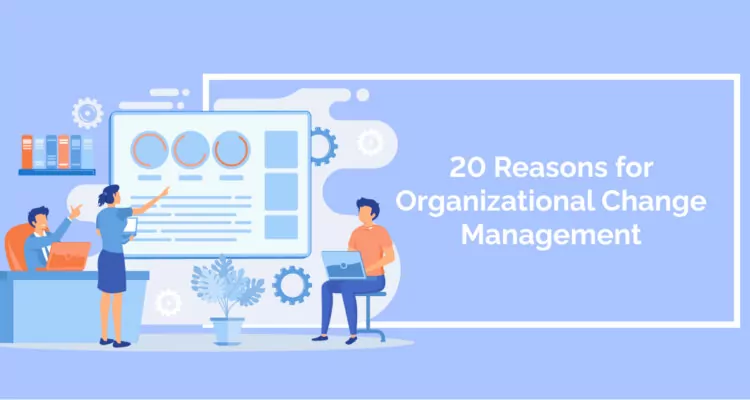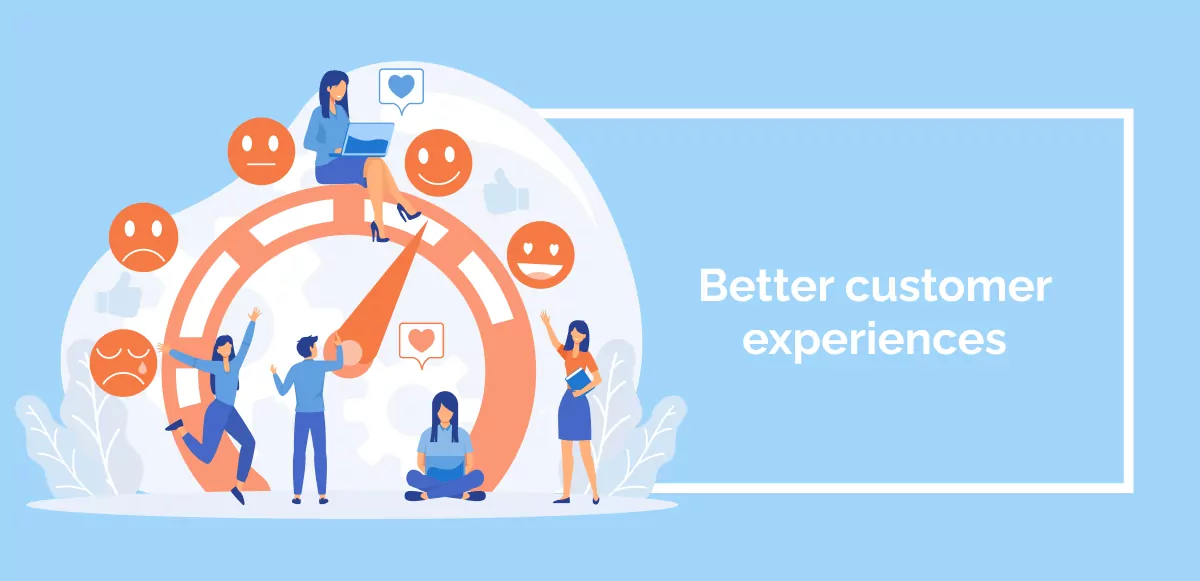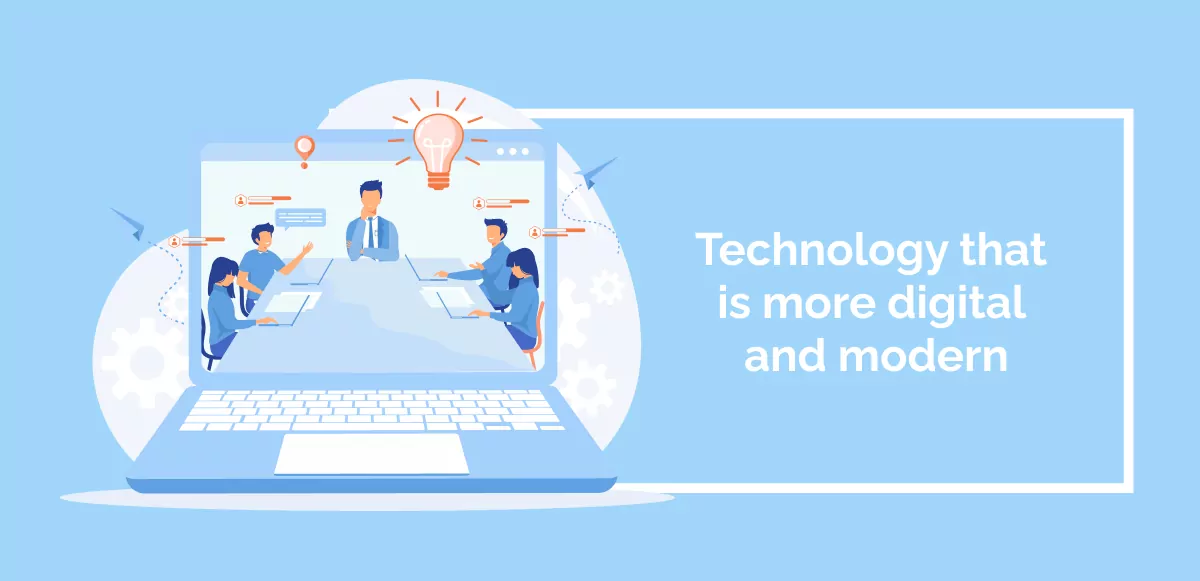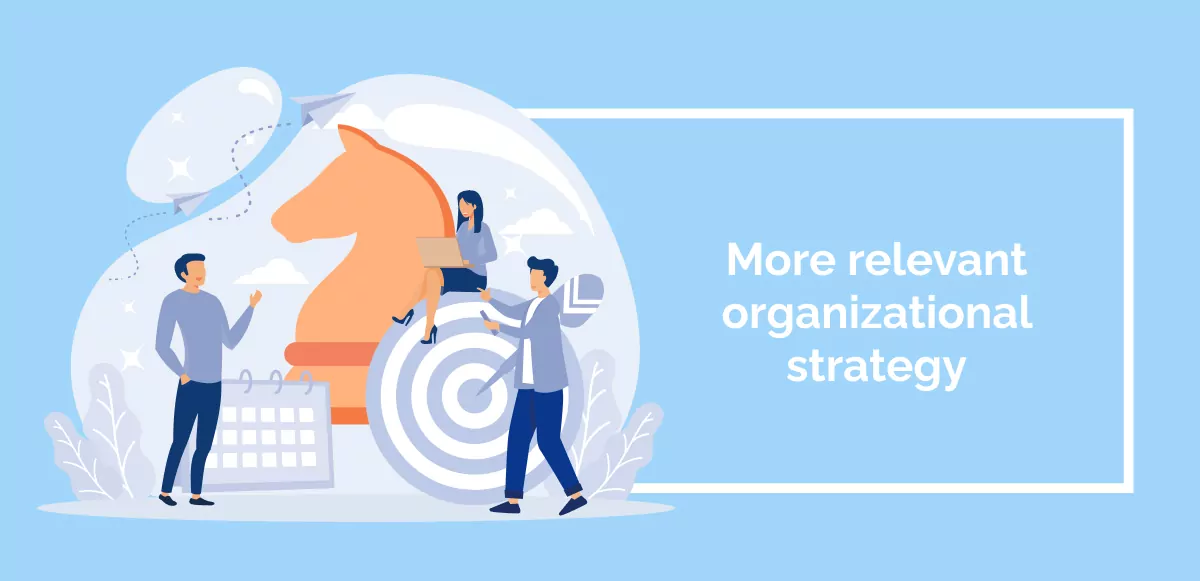
In business, change is not just inevitable. It’s necessary.
However, navigating through this unpredictable environment can be challenging. But fret not, as we have got you covered with an essential guide that will simplify this journey for you.
Change, while a catalyst for innovation, can also lead to employee apprehension and resistance. This is where adept organizational change management becomes pivotal, transforming potential turmoil into a seamless transition.
We will take you on a journey, exploring twenty persuasive reasons why change management should be a priority in your business strategy. We will investigate how it can amplify efficiency, enhance employee engagement, foster adaptability, and much more.
This guide is designed not just for the seasoned business leader but also for the novice entrepreneur. It provides a simple, straightforward understanding of navigating your organization through change. It’s about harnessing the power of change to work in your favor rather than letting it become an obstacle.
Understanding the reasons for organizational change helps in many ways. You can:
- Justify a project for organizational change
- Gain a deeper understanding of the rationale behind organizational change
- Develop an enhanced organizational change project design
Now, let’s explore the key motivations behind embracing managed organizational change.
1. A more fulfilling and attractive workplace
According to a comprehensive study by Google and Cloudbakers, one of the greatest advantages of successfully implementing organizational change is creating a more satisfying and appealing workplace.
This positive outcome enhances employee happiness and engagement and fosters a culture of innovation and collaboration. The research findings revealed that this objective, surpassing all other measured data points, consistently exceeded expectations, illustrating the transformative power of effective organizational change.
2. A better employee experience
Employees often resist change due to various reasons, such as fear of the unknown, uncertainty about their roles, or concerns about the impact on their job security.
This resistance can lead to significant organizational problems if not properly addressed.
However, by implementing a well-managed change project, organizations can improve the employee experience and achieve better results by addressing and mitigating resistance through effective communication, training, and support.
Such initiatives help employees understand the rationale behind the change, provide them with the necessary tools and resources to adapt and foster a positive and supportive work environment that encourages collaboration and innovation.
3. Better project outcomes

One of the primary drivers for managing organizational change is the potential for improved outcomes and enhanced organizational performance.
By implementing effective change management strategies, organizations can mitigate risks, optimize resource allocation, and foster a culture of adaptability. This leads to greater project success rates and overall business growth.
The ability to anticipate and proactively address change-related challenges ensures that organizations remain competitive and resilient in dynamic environments.
4. Lower project costs
Change management is a critical aspect of project execution, as it significantly contributes to the reduction of project costs through various means. These include risk mitigation, enhanced efficiency, and improved project design.
Organizations can reap substantial financial savings and achieve greater success by adopting more efficient management strategies and structures. A well-planned approach to change management allows these establishments to proactively anticipate and tackle possible hurdles and difficulties.
This proactive approach ensures seamless project execution, optimal use of resources, and a significant increase in return on investment.
5. Decreased employee resistance

As mentioned, employee resistance is common.
Effective change management strategies make this a primary focal point, ensuring a smooth transition and maximizing project results. If not properly addressed, employee resistance can have significant ramifications, such as escalating project costs, compromising the employee experience, or even leading to the complete halt of a project.
It is crucial to proactively manage and mitigate resistance through clear communication, stakeholder engagement, and fostering a culture of openness and collaboration.
By doing so, organizations can successfully navigate change and achieve their desired outcomes.
6. Greater employee satisfaction
Implementing effective organizational changes can have a profound impact on employee satisfaction.
Creating a work environment that fosters a sense of purpose and fulfillment can lead to elevated levels of motivation and engagement among employees. This positive shift can enhance employee performance, boost productivity, and impact crucial metrics like retention and job satisfaction.
Ultimately, investing in organizational changes that prioritize the well-being and growth of employees can yield long-term benefits for individuals and the company’s overall success.
7. More efficient business processes

Business processes are frequently the focal point of change projects as organizations seek to optimize their operations and improve efficiency.
Introducing innovative technologies and tools, such as new software solutions, is a common strategy for businesses to streamline their processes. This approach can significantly enhance the performance of specific functions within the organization.
For example, a well-executed software implementation can lead to significant time and cost savings, enabling teams to work more effectively and achieve better outcomes. With careful planning and execution, these initiatives have the potential to drive long-term success and foster a culture of continuous improvement within the organization.
8. Higher profit margins
All of the other reasons mentioned here translate into bottom-line profits.
This is because change management helps improve efficiency, reduce costs, and enhance productivity, leading to increased revenue and profitability.
However, it is important to note that not every benefit of change management can be directly tied to profit, at least not immediately. Some benefits may be more indirect, such as improved employee morale, higher customer satisfaction, and better brand reputation.
Therefore, it is crucial to keep a wide field of view and examine every benefit, looking beyond just the immediately visible return on investment (ROI). By doing so, organizations can fully leverage the power of change management and unlock long-term success.
9. A competitive edge
Another significant advantage of the benefits covered here is that they provide a substantial competitive edge.
Implementing improved business processes allows organizations to optimize operations, streamline workflows, and enhance overall productivity. The consequential effect is a boost in employee efficiency and effectiveness. Such an enhancement gives businesses the competitive edge to stay ahead in their respective industries.
The availability of better tools and technologies enables organizations to leverage advanced capabilities and deliver superior products or services to their customers. These combined advantages empower organizations to establish a strong market position and outperform their rivals, ultimately driving long-term success and growth.
10. Better customer experiences

Customer experiences (CX) are another reason to consider organizational change.
Organizations can significantly enhance the end-user experience by implementing streamlined processes, optimizing employee metrics, improving products, and leveraging advanced tools.
Such improvements can yield a plethora of positive outcomes, like heightened customer satisfaction, increased engagement, improved retention rates, and enhanced lifetime value.
The unwavering commitment to continuous improvement and customer-centricity ensures long-term success and growth for businesses.
11. A track record of successful change
A proven track record of successful change benefits change managers, organizations, and employees and plays a crucial role in driving future transformations.
Having a well-documented history of successful change initiatives, showcasing the ability to navigate challenges and capitalize on opportunities, instills a deep sense of confidence and trust in the organization’s ability to lead and adapt.
Cultivating a culture that values resilience and agility enables individuals and teams to adapt to change and anticipate and respond proactively to shifting circumstances. Demonstrating a track record of successful change initiatives underscores the critical role of change management in attaining long-term organizational objectives.
This also aids in securing stakeholder support and endorsement while promoting a positive attitude towards change across the entire organization.
12. A more desirable workplace culture
Another aim of change management is an enhanced organizational culture.
Change managers are critical in steering organizations to align their workplace culture with the envisioned one. Through the execution of effective strategies and the promotion of open communication, they ease the transition process. They ensure the workforce wholeheartedly adopts the organization’s vision and goals.
Through their expertise, change managers help create a supportive environment that encourages collaboration, innovation, and continuous improvement, ultimately driving the organization toward success.
13. Technology that is more digital and modern

Change projects often involve digital adoption, IT modernization, software implementation, or combining all three.
These initiatives are crucial for organizations to keep up with the rapidly evolving technological landscape and stay competitive in the market.
When businesses adopt more advanced technology, they can access a wealth of benefits that influence all stakeholders positively. This includes equipping employees with efficient tools and improving the customer experience through smooth interactions and tailored services.
Adopting innovative solutions and staying abreast of the latest advancements can pave the way for long-term success and growth in today’s dynamic business environment.
14. More effective training solutions
Training plays a crucial role in effective change management.
When organizations offer comprehensive and customized training programs, they can notably amplify employee engagement, maximize learning efficiency, elevate overall productivity, and stimulate exceptional performance.
Employees with the requisite tools, knowledge, and support through training initiatives, including Digital Adoption Platforms (DAPs), are more prepared to manage change, acclimate to new processes, and contribute positively to the organization’s success.
Investing in robust training programs, including DAPs, empowers employees and sets the stage for sustained growth and success in a swiftly changing business environment.
15. The ability to adapt to change
Change management is pivotal in enhancing an organization’s ability to adapt and thrive in today’s dynamic market.
With the ever-increasing pace of disruptive changes, the trait of adaptability becomes even more critical for organizations aiming to not just survive but also excel. By implementing effective change management strategies, organizations can foster a culture of continuous improvement, proactively embracing and responding to changes in their environment.
This proactive approach enables them to stay ahead of the curve, seize opportunities, and navigate challenges with agility and resilience.
16. More relevant organizational strategy

Organizational changes are driven by the organization’s overall strategy, which encompasses various factors such as market dynamics, customer demands, and competitive landscape.
Effective change projects enable organizations to keep their strategy contemporary and pertinent, fostering their ability to adjust and prosper. These transformative initiatives necessitate meticulous analysis, planning, and execution, considering the distinct needs and objectives of the organization.
Through process improvement methodologies and innovation, organizations can navigate the complexities of change and achieve sustainable success.
17. A greater alignment between organizational strategy and change projects
The more change projects your organization completes, the more experienced your business will be in change management. This increased experience will enable your organization to develop a deep understanding of change dynamics, build a robust change management framework, and cultivate a culture that embraces change as a strategic advantage.
As a result of this continuous improvement in change management, your organizational strategy will gradually become more and more aligned with change initiatives. This alignment will foster a proactive approach to change, enabling your business to anticipate and adapt to market trends, customer demands, and technological advancements.
This alignment also enhances executive support for change initiatives, as leaders recognize the value of change management in driving successful outcomes. Moreover, the increased organizational agility derived from effective change management allows your business to respond swiftly to disruptions, seize new opportunities, and stay ahead of the competition.
18. Speed

Speed is indeed a key benefit of organizational change management.
Effective change management practices enable organizations to fine-tune processes and operations, increasing efficiency. This optimization leads to faster product releases and a more responsive approach to external circumstances.
Organizations that implement streamlined workflows, agile decision-making processes, and proactive strategies are positioned to swiftly seize opportunities and retain a competitive edge. This approach allows them to stay ahead and respond promptly to industry changes without referring to the ever-changing business environment.
Embracing change management enhances speed and fosters a culture of continuous improvement, empowering organizations to adapt and thrive in an ever-evolving environment.
19. More advanced enterprise change management
Enterprise change management refers to an organization’s change management function.
Increasing the number of successful project completions fosters organic growth and development within your business and paves the way for a consistent flow of achievements.
This virtuous cycle of success fosters an environment where more projects can flourish and thrive, fueling the momentum of your business and propelling it to new heights of achievement. With each successful project, you build a reputation for excellence, attracting more opportunities and establishing your business as a leader in your industry.
Embrace this cycle of success and watch as your business reaches new levels of greatness.
20. More modern change management practices and strategies
Companies that actively embrace change management will greatly benefit from adopting modern change management practices.
Organizations can attain superior outcomes when implementing agile change management and lean thinking. This strategy also aids in ensuring their pertinence and flexibility in today’s commercial environment.
These contemporary approaches, rooted in flexibility and continuous improvement, are instrumental in driving success by enabling companies to stay ahead of the competition, swiftly respond to market demands, and effectively navigate through uncertainties.
With a focus on strategic planning, collaboration, and employee empowerment, organizations can foster a culture of innovation and change readiness, ensuring sustained growth and long-term success.
Not Convinced? A Final Reason For Organizational Change Management
Change management is all about flexibility and adaptability.
In our fast-paced world, where nothing stays the same for long, companies need to be agile, ready to learn, and adjust on the fly.
But change management is not just about the big picture; it’s about the people, too.
Employees play a crucial role in the success of change initiatives. When they understand and embrace change, they become more dedicated, productive, and content, driving the organization toward its goals.
Change management is a vital survival tool for companies. It enables them to navigate challenges and uncertainties and empowers them to identify and seize new opportunities.
Organizations that embrace a proactive and adaptive approach can secure their place at the forefront of innovation and growth.
WalkMe Team
WalkMe spearheaded the Digital Adoption Platform (DAP) for associations to use the maximum capacity of their advanced resources. Utilizing man-made consciousness, AI, and context-oriented direction, WalkMe adds a powerful UI layer to raise the computerized proficiency, everything being equal.



